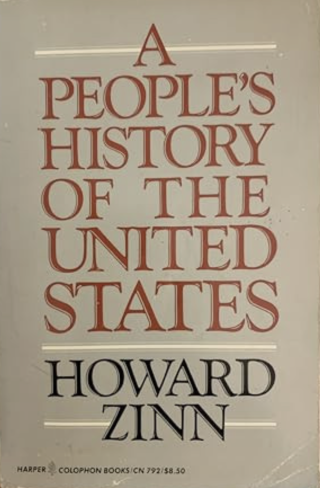THE TERM “people’s history” entered into historians’ use in 1966 with E. P. Thompson’s “History from Below,” published in the Times Literary Supplement. Though “people’s history” or “history from below” had both likely been used since the ’30s, Thompson’s work popularized it — inasmuch as a Times Literary Supplement piece can popularize something. This style of historiography subverted the tradition of viewing working people as the passive receptors of historical change — instead, they became actors of their own worth, whose resistance, aspirations, and articulated visions of the future made them active participants in the creation of society today. But Thompson’s work retains the problems of its era: it mixed condescension and glorification of the working man — emphasis on man — and made no real reference to people of color, women, LGBTQ folks. Perhaps most troubling, though, is how the newly minted histories from below assumed, at least among historians, that to take this perspective was in and of itself revolutionary.
Perhaps the best-known example of the genre is Howard Zinn’s A People’s History of the United States, going on, as it did, to appear in not only The Sopranos and The Simpsons but the beloved modern-day parable Good Will Hunting. (Though its purported prevalence in high school syllabi is notably overblown.) Zinn’s book is simple, dividing the world neatly into good versus evil, but it is also compelling. Zinn argues that we shouldn’t simply take the perspective of “the people,” recounting the daily toil of the workers with the same reverence as their conquerors’ wars as if this will bring fresh eyes to the human condition, but that to take this perspective asserts that, at its core, human progress as we understand it was designed to benefit a breathtakingly narrow slice of humanity.
And even still, like Thompson’s work and any people’s history, Zinn’s book is necessarily limited, given that the definition of “people” changes over time to better reflect the full range of humanity. But at least a people’s history is more likely to be conscious of its limits — of whom, that is, we count as having a perspective worth reviewing.
Joining this tradition, but also tacitly critiquing the limitations of existing people’s histories, Beacon Press launched in 2011 a series called “ReVisioning American History.” Its fourth and most recent addition, Paul Ortiz’s An African American and Latinx History of the United States, came out earlier this year. A Black Woman’s History of the United States is forthcoming. The books are conceived and written seemingly in the spirit of Zinn’s People’s History, itself published several times by Beacon Press. But while Zinn’s popular text swept through centuries and perspectives under one title, Beacon’s series gives each perspective its own book. Each takes us from pre-colonized America to today from the point of view of queer people, disabled people, Indigenous people, and now African-American and Latinx people.

